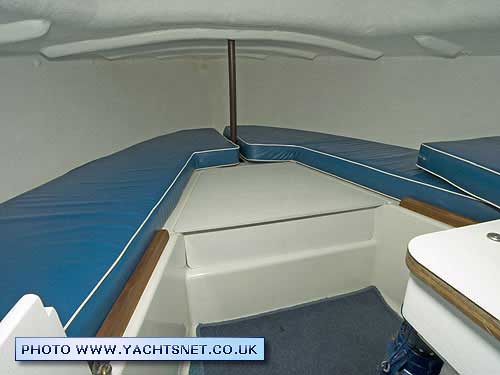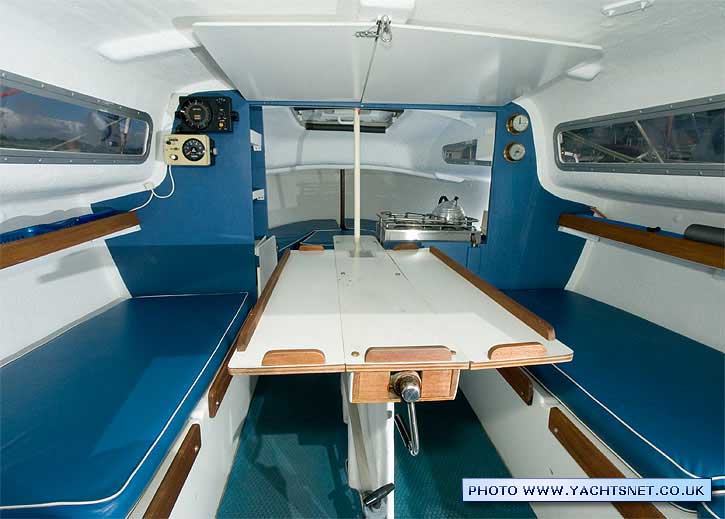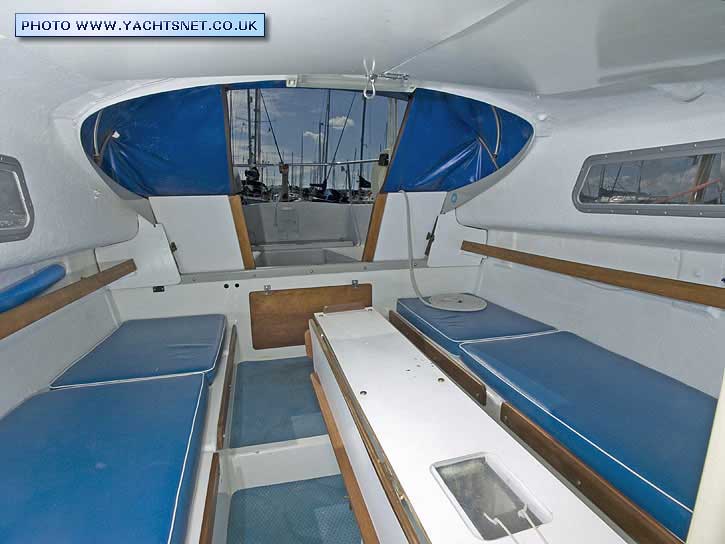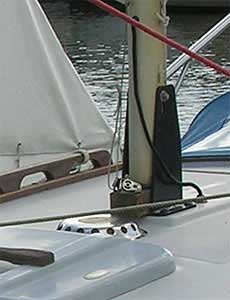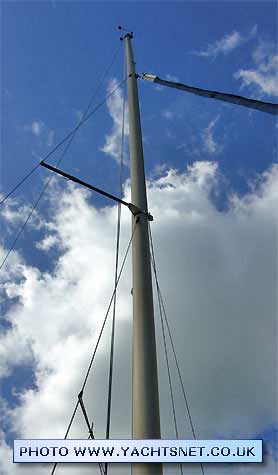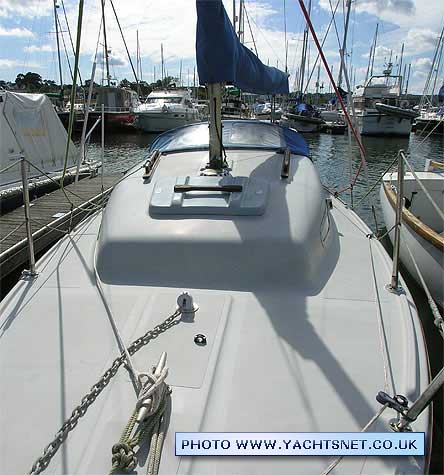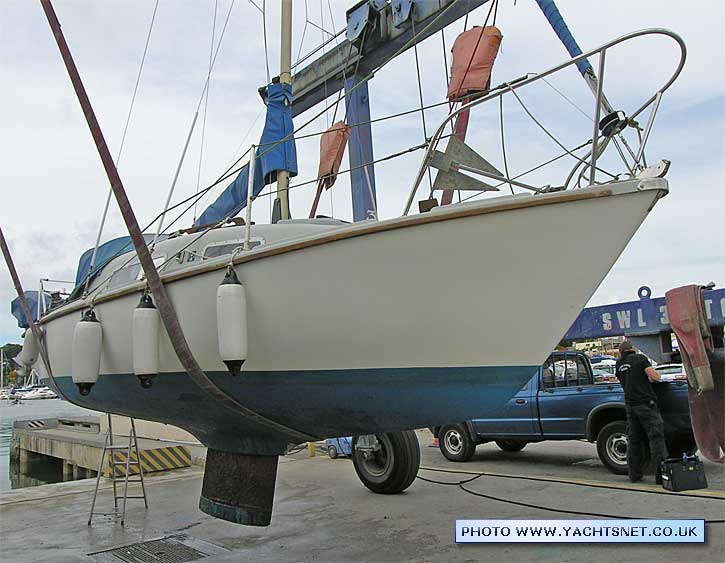| |
|
|
|
|
|
|
|
| © Yachtsnet Ltd. 2000/2025 |
|
|
|
| |
|
|
Yachtsnet's
archive of boat details and pictures
|
| |
The following information and photographs are displayed as a
service to anyone researching yacht types. HOWEVER THE PHOTOGRAPHS AND TEXT ARE COVERED BY COPYRIGHT, AND MAY NOT BE REPRODUCED WITHOUT THE PERMISSION OF YACHTSNET LTD. Details and
photographs are normally based on one specific yacht, but could
be a compilation. No reliance should be placed on other yachts
of the same class being identical. Where common variations
exist, we have endeavoured to indicate this in these archive details.
|
R8157 |
Seal 22 Mk I |
Brief details
|
Builder |
John Baker, Starcross, Devon |
The original Seal
22 is a popular small daysailer, but is also seaworthy enough for
coastal cruising passages. The design has a unique split-function
'convertible' cabin structure, with no fixed aft cabin bulkhead,
so that this area can be opened out and used as a deep secure and
sheltered lower cockpit area for passengers when day sailing, yet
covered by ply boards and canvas under a sprayhood in bad weather
or to extend the cabin area when cruising. |
LOA |
21' 9" |
Sail area |
241 sq ft main and genoa |
LWL |
18' 0" |
Rig |
sloop |
Beam |
7' 9" |
Cabins |
1 |
Draught |
2' 0" keel up to 3' 10" keel down |
Berths |
4 |
Displacement |
2,400 lbs |
Engine |
outboard |
Ballast |
800 lbs |
BHP |
typically 6 hp |
Keel type |
Cast iron drop keel with lifting rudder |
|
|
Introduced in 1969, and an immediate success,
the Seal 22 was designed by Angus Primrose for John Baker
Ltd., and remained in production until 1980, with various
minor changes in Mk II and Mk III versions. All three versions
used the same hull and keel, and are relatively fast boats
for their size, whilst remaining easy to handle.
The lift keel is an iron casting, with a widened base to keep
the centre of gravity low, which partially retracts to reduce
draught. |
|
|
|





